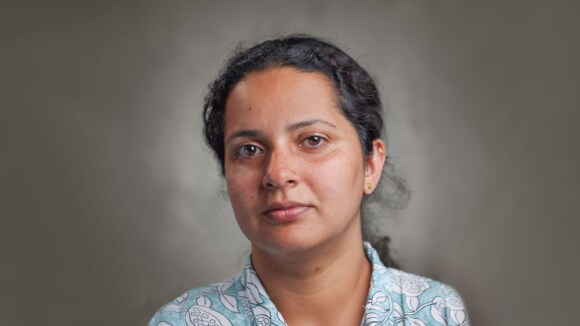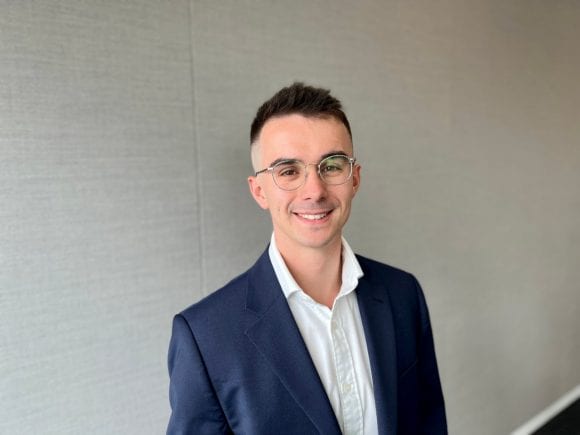In conversation with the Institute
Mariam Zachariah: Extreme weather presents unique communication challenges
Timely analyses that link human-made emissions to climate change are essential to inform the public discussion of climate change, especially in the wake of extreme events.
Mariam Zachariah is a researcher at the Grantham Institute for Climate Change and the Environment within Imperial College London. She joined the World Weather Attribution (WWA) group, which studies whether human-induced climate change influences extreme weather events, in 2022. Mariam earned her PhD in climate science on extreme weather’s impact on Indian agricultural yields from the Indian Institute of Technology Bombay.

What does the World Weather Attribution research group do?
What does the World Weather Attribution research group do?
We are a group of physical and social scientists who study extreme weather events to answer the question: Did climate change influence the event, and to what extent?
We use our own peer-reviewed methods that adhere to Extreme Event Attribution, which is a cutting-edge and relatively young branch of science. Our goal is to inform the public messaging of the link between natural disasters and human-made emissions, and discussions on climate change, mitigation, and adaptation. We strive to complete our analysis within days to three weeks of any event. That is when the impacts are still fresh in people’s minds, and decisions about rebuilding are being made.
How do you run these regular attribution studies?
How do you run these regular attribution studies?
Each week, our research group reviews recent natural disasters. If any meet our threshold for high impact, which is based on set criteria such as the extent of affected population or infrastructure, we reach out to local collaborators to get on-the-ground information. We then analyze if there is an attributable link between climate change and the natural disaster by combining trends in observed climate data and outputs from climate models. We present our findings as a report, which includes our attribution analysis as well as evaluations of vulnerability, exposure, and response to the disaster. These additional elements are crucial as the overall impact of an event is tied not just to the intensity of the weather event, but also to how susceptible an area is to floods or heatwaves, and the community’s ability to respond after the event.
What are some recent weather events that are particularly well-attributed to human emissions?
What are some recent weather events that are particularly well-attributed to human emissions?
Temperature extremes such as heatwaves and anomalously hot summers and winters are well-understood as responding linearly to global warming.
Simply put, in a warming world, hot events become more frequent and intense, while cold events become less frequent and milder. Our recent studies include the heatwave that hit in April 2024, and the Asian heatwaves in the second quarter of 2024. In both cases, observed temperatures were significantly less likely to almost impossible without human-induced global warming.
In contrast, rainfall extremes are analytically challenging to link to climate change due to the complex interactions between atmospheric circulations, and the direct effects of global warming that enables the atmosphere to hold more water vapor. We recently studied the flooding in the United Arab Emirates (UAE) and Oman. The heaviest precipitation fell over a relatively small area in Dubai, which is too granular for most climate models. So, we adapted our methods by considering observed trends and evidence from climate models in the broader region. This indicated that rainfall would have been 10–40% less without climate change. This finding aligns with the physical understanding that warming leads to heavier rainfall and corroborates the evidence of increasing extreme rainfall across the wider Arabian Peninsula.
Have you encountered challenges communicating the link between human emissions and climate change?
Have you encountered challenges communicating the link between human emissions and climate change?
Each extreme weather event creates its own communication challenges.
Our local collaborators are very important, especially social scientists, to ensure we have a rounded view of the facts and consider both physical and socioeconomic factors. The impact of heavy rainfall in the Philippines, for instance, is partly a consequence of deforestation and mining in the region, which can increase the likelihood of landslides. Our recent UAE study was complicated by the popular belief that cloud seeding—a method to induce rainfall by injecting clouds with particles—was responsible for the heavy rainfall and flooding. While cloud seeding is widely used in the region, the National Center of Meteorology confirmed no cloud seeding happened. This misconception, coupled, with the localized nature of the event, made communicating our results challenging.
How do sceptics respond to your work?
How do sceptics respond to your work?
We frequently encounter skepticism about whether climate change is real or a hoax..
Not every event is made more likely by climate change. Sometimes, physical understanding and previous evidence in the region may identify climate change links to an extreme event, but limitations or lack of good quality observations or the inability of climate models to capture relevant processes can make the results appear inconclusive. As scientists, we are obliged to draw conclusions by weighing all these factors, which is sometimes misconstrued as hyping an event.
Where do you see the field of rapid weather attribution evolving in the coming years?
Where do you see the field of rapid weather attribution evolving in the coming years?
With more teams involved in the shared mission of disseminating information on the links between climate change and extreme events through rapid attribution, we can increase the body of evidence for strengthening adaptation and mitigation policies. Within WWA, each study presents learning opportunities, and we continuously adapt our methods to address new questions. For example, the recent strong El Niño has exacerbated many storms and heat events since 2023. In regions where El Niño is known to have an influence, we adapted our methods to distinguish its effects from those of global warming. Finally, we are not the only group providing rapid attribution research. Many organizations worldwide have joined the mission, and the findings of attribution studies are being used in innovative ways in fields like law and insurance.
The interviewee is external to UBS and the answers provided do not necessarily reflect UBS’s view.
For further information, please visit www.ubs.com/institute-disclaimerPlease visit institute disclaimer







